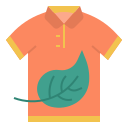Revolutionary Materials in Sustainable Apparel
Bamboo and Hemp Fabrics
Bamboo and hemp have emerged as frontrunners in the world of eco-friendly textiles, both revered for their rapid growth rates and minimal need for pesticides or irrigation. Bamboo fibers produce fabrics that are soft, naturally antibacterial, and highly breathable, making them ideal for activewear and undergarments. Hemp, on the other hand, yields an exceptionally strong textile that becomes softer with each wash while remaining highly durable. Its cultivation improves soil health, thanks to deep root systems that prevent erosion and naturally enrich the ground with nutrients. By integrating these materials in mainstream production, brands can offer clothing that is gentle on skin and on the earth, extending the life cycle of garments without compromising comfort or style.
Piñatex: Pineapple Leaf Fiber
Piñatex represents a breakthrough in the pursuit of cruelty-free, sustainable leather alternatives. Derived from the fibrous waste of pineapple leaves, this innovative material transforms agricultural byproducts that would otherwise be discarded or burned. The resulting textile is lightweight yet robust, with a unique texture that recalls traditional leather, making it well-suited for shoes, bags, and outerwear. Piñatex production supports rural farming communities, adding value to existing pineapple harvests and promoting more circular agricultural systems. Its versatility and eco-friendly credentials have positioned Piñatex at the forefront of fashion’s drive toward lower-impact, plant-powered innovation.
Lyocell from Eucalyptus Trees
Lyocell, often marketed under the brand name TENCEL™, has gained prominence as a next-generation cellulosic fiber harvested from sustainably managed eucalyptus forests. The closed-loop production process uses non-toxic solvents that are captured and reused, greatly minimizing water and chemical waste. Lyocell fabrics are celebrated for their silky smoothness, exceptional moisture-wicking properties, and natural breathability, making them a favorite for both casual and performance wear. Eucalyptus trees, the raw source, thrive on marginal land, requiring far less water and pesticides than conventional cotton crops. Lyocell’s environmental benefits are paired with remarkable versatility, proving that luxury and sustainability can coexist seamlessly in the modern wardrobe.
Upcycling and Waste Repurposing in Textiles
Regenerated Nylon and Polyester
Advanced recycling technologies now enable the creation of high-performance textiles from waste sources such as fishing nets, carpet offcuts, and post-consumer plastic bottles. Regenerated nylon, such as ECONYL®, is chemically transformed back to its original purity, allowing it to be spun into new fibers without loss of quality. Similarly, recycled polyester breathes new life into PET plastics, reducing dependence on virgin fossil fuels. Both materials retain the durability, elasticity, and colorfastness of their conventional counterparts, expanding the options for sustainable activewear, swimwear, and outerwear. These processes champion a cradle-to-cradle approach, illustrating how waste can become the raw material for tomorrow’s fashion.
Denim from Post-Consumer Waste
The denim industry has long been scrutinized for its water usage and chemical-intensive dyeing processes, but a new wave of circular innovation is transforming this wardrobe staple. Companies now produce denim by blending discarded cotton garments and cutting-room scraps, spinning them into fresh yarns without the need for new raw cotton. These upcycled denims retain the comfort and durability expected from the fabric while using far fewer resources and generating less pollution. Innovations in waterless dyeing and mechanical recycling further enhance sustainability. By closing the loop on denim, brands are empowering consumers to choose jeans that tread more lightly on the planet.
Orange Fiber from Citrus Byproducts
In a unique marriage of agriculture and fashion, orange fiber represents a novel textile derived from the cellulose extracted out of citrus juice production waste. Each year, millions of tons of orange peels are discarded globally, but innovative processes now turn this biomass into a silky, lightweight fabric with a soft sheen. Orange fiber textiles can be blended with cotton or silk to enhance drape and tactile appeal. Companies utilizing this material are not only preventing substantial organic waste from entering landfills but also creating economic opportunities in agricultural regions. The success of orange fiber underscores the immense untapped potential of food industry byproducts as elegant, renewable raw materials for next-generation luxury.
Next-Generation Biodegradable Innovations
Bio-Based Polymers and Bioplastics
Bio-based polymers are being crafted from renewable sources, such as corn starch, sugarcane, or cassava, offering an inventive alternative to traditional petroleum-derived plastics. When engineered with precision, these bioplastics can match the resilience, stretch, and feel of conventional synthetic fibers, yet decompose naturally under industrial composting conditions. Startups and established brands alike are exploring polylactic acid (PLA) and other bio-composites as substrates for performance outerwear, sports shoes, and even fashion accessories. The reduced carbon footprint and promise of safe end-of-life disposal make bio-based polymers a cornerstone of circular fashion.
Mushroom Mycelium Leather
Mycelium-based leather is at the forefront of biomaterial design, made by cultivating the root structure of fungi in a controlled environment. This process rapidly produces leather-like sheets that are customizable in thickness, texture, and color without the environmental toll of animal agriculture or traditional tanning chemicals. Mushroom leather is soft, lightweight, and inherently biodegradable, breaking down cleanly in natural conditions. Driven by advances in biotechnology and material science, mycelium leather holds promise for not only replacing animal hides but also redefining the possibilities of cruelty-free, sustainable, and regenerative fashion. Its potential applications extend from footwear to handbags, suggesting a future where luxury and ethics coexist.
Algae-Based Textiles
Algae, among the fastest-growing organisms in the world, is providing a resource-efficient feedstock for innovative textiles. By harvesting and processing algal biomass, researchers have developed fibers that are lightweight, breathable, and biodegradable. These materials are capable of sequestering carbon dioxide during cultivation and can even impart functional benefits, such as skin-soothing compounds in activewear or naturally antimicrobial properties. Algae-based textiles decompose swiftly in compost, leaving no toxic residues. The integration of algae into fabric production is an exciting step forward, demonstrating how aquatic biology can inform a new era of sustainable, restorative apparel.
